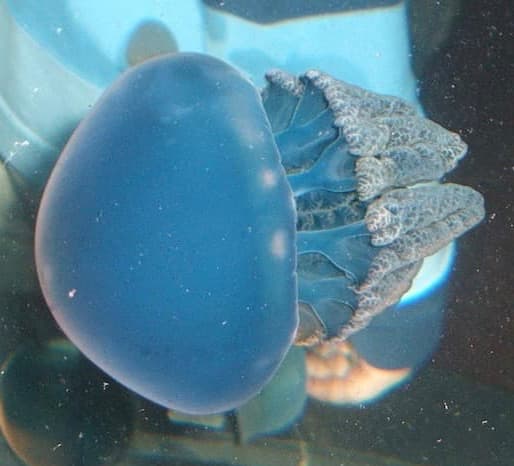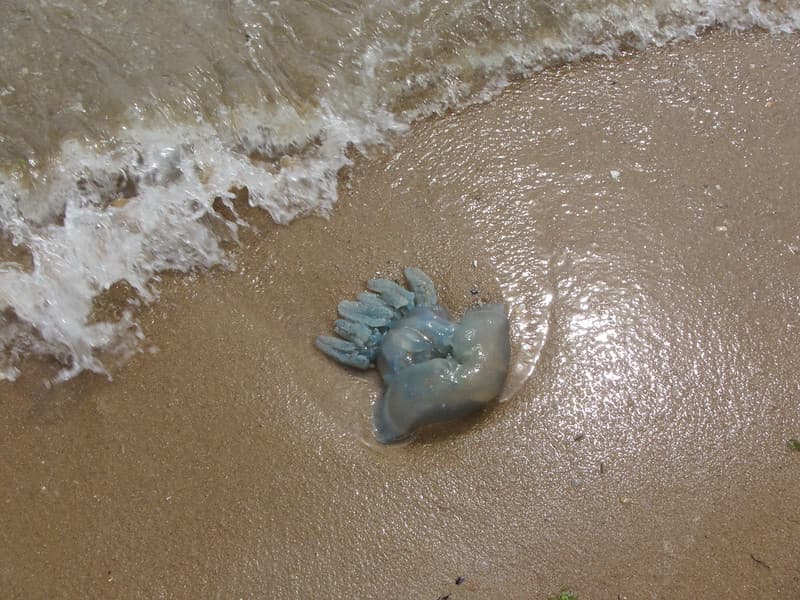The catostylus mosaicus, also called mosaic sea jellyfish or blue blubber jellyfish, is a slow moving jellyfish that lives in shallow water and is generally abundant in coastal areas. It is common in lagoons and estuaries where it can be found in large swarms.
It is native to the entire Indo-West Pacific from Pakistan to Australia, through Thailand and Malaysia. It is a very common jellyfish in these regions to the point that they are exploited in breeding farms to transform them into dehydrated and edible jellyfish. It is a species considered invasive in the Mediterranean.
Its umbrella is ball-shaped and can reach 35 cm in diameter with tentacles that can reach 1 meter. Its color, although often light blue, can vary from white to light blue or even purple to dark depending on the region of the world. For the anecdote, it is a Catostylus which, in Brisbane in 2006, blocked the cooling circuits of the American nuclear aircraft carrier USS Ronald Reagan, "putting it out of use and imposing an immediate evacuation".

Catostylus mosaicus. ©Steven G. Johnson

Jellyfish on the beach. ©Alpha
Dangerousness
The effects of the sting of this jellyfish on humans is moderate compared to other jellyfish. Generally the sting creates a slight redness in the area affected by the tentacles, with an itching sensation that may last for some time. However, in some more sensitive people, stronger reactions can be reported.
